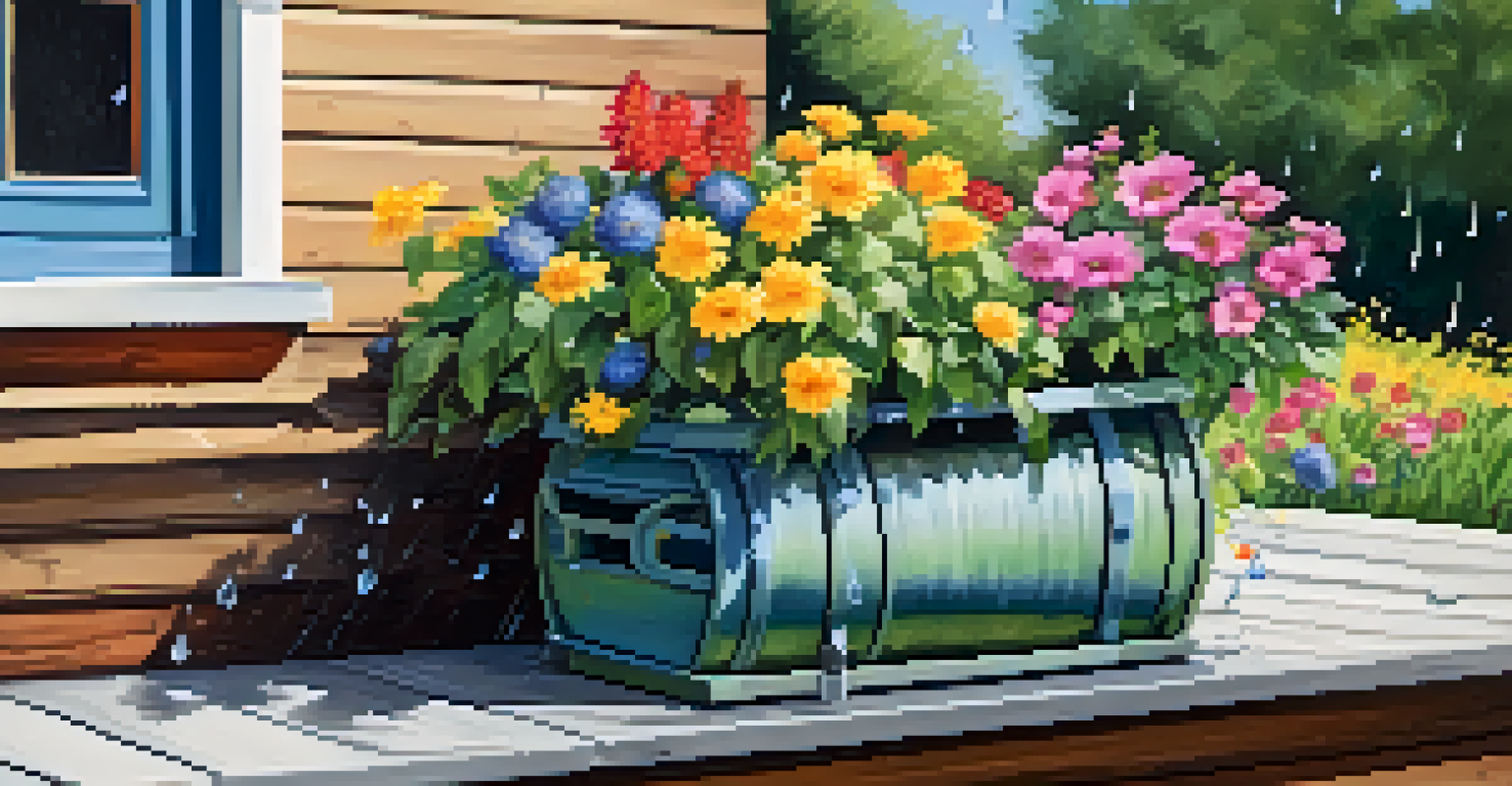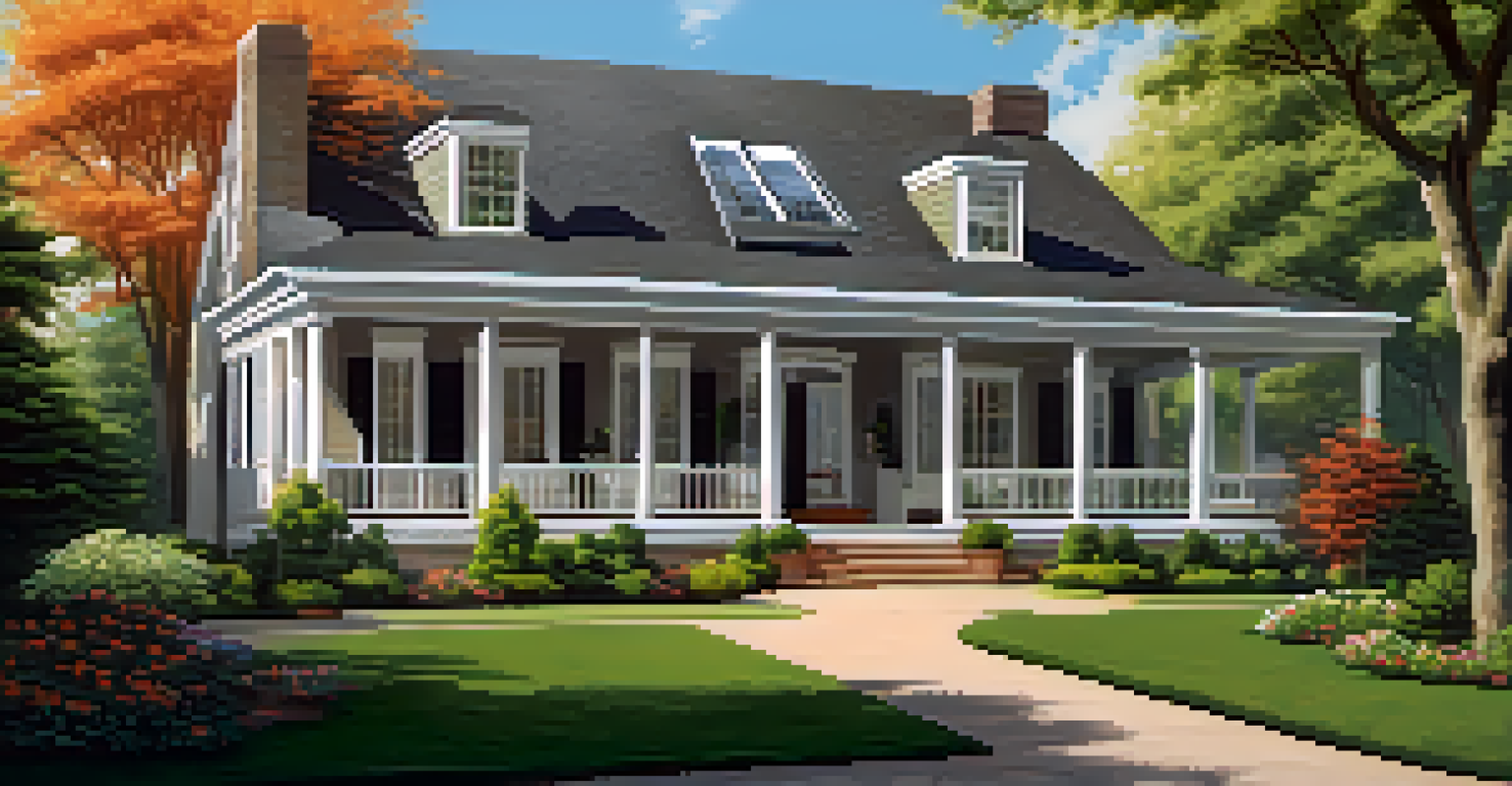Simple DIY Projects to Enhance Energy Efficiency at Home

Seal Drafts for Improved Comfort and Savings
Drafts can sneak into your home through gaps around windows and doors, making your heating and cooling systems work overtime. Sealing these drafts is a simple yet effective DIY project that can significantly enhance your home's energy efficiency. Start by inspecting your windows and doors for any gaps or cracks.
The greatest threat to our planet is the belief that someone else will save it.
Once you've identified the problem areas, use weatherstripping or caulk to seal off those drafts. This not only keeps your home comfortable but also lowers your energy bills, as your HVAC system won’t have to work as hard. It's a small investment that can lead to substantial savings over time.
Plus, sealing drafts can improve your indoor air quality by preventing unwanted outside pollutants from entering your home. In addition to comfort and savings, you’ll contribute to a healthier living environment for your family.
Upgrade Your Light Bulbs to Save Energy
Switching to energy-efficient light bulbs is one of the easiest DIY projects you can tackle. By replacing traditional incandescent bulbs with LED or CFL bulbs, you can reduce energy consumption significantly without sacrificing brightness. LEDs, for example, use up to 75% less energy and last up to 25 times longer.

To make this switch, simply replace your most frequently used bulbs first, like those in the kitchen or living room. You'll notice a difference not just in your energy bill but also in the quality of light in your home. Many energy-efficient bulbs offer a warm light that can create a cozy atmosphere.
Seal Drafts for Comfort and Savings
Sealing drafts around windows and doors can enhance energy efficiency and lower your heating and cooling bills.
Furthermore, this eco-friendly choice is a step toward a more sustainable lifestyle. Every little change counts, and upgrading your light bulbs is a quick win for both your wallet and the planet.
Install a Programmable Thermostat for Smart Savings
A programmable thermostat is a smart upgrade that can help manage your home's energy use effortlessly. By setting schedules for heating and cooling, you can ensure that your system operates only when needed. This simple DIY installation can lead to significant savings on your energy bills.
Energy efficiency is not just a good idea; it’s the law of the land.
For instance, you can program the thermostat to lower the temperature while you're at work or raise it while you sleep. This way, you’re not heating or cooling your home when it's empty, which is a common energy-wasting practice. It's like having a personal assistant for your energy management.
Plus, many modern thermostats come with smart technology, allowing you to control your home's temperature from your smartphone. This added convenience makes it easier than ever to maintain your desired comfort level while saving energy.
Enhance Insulation for Year-Round Efficiency
Proper insulation is essential for maintaining a comfortable temperature in your home and reducing energy costs. Many homeowners overlook this aspect, but adding or upgrading insulation can be a game-changer. You can start by checking areas like your attic, basement, and walls for adequate insulation.
If you find that your insulation is lacking, consider DIY options such as fiberglass batts or spray foam. These materials can help keep the heat in during winter and the cool air in during summer, effectively reducing the strain on your HVAC system. This project not only enhances comfort but also boosts your home's resale value.
Upgrade to Energy-Efficient Bulbs
Switching to LED or CFL bulbs significantly reduces energy consumption while improving the quality of light in your home.
Additionally, better insulation contributes to a quieter home by reducing noise transfer from outside. It's an investment in both your comfort and your peace of mind.
Create a Rain Barrel for Water Efficiency
If you're looking for a fun and eco-friendly DIY project, consider creating a rain barrel. Collecting rainwater for gardening and outdoor use can significantly reduce your water bill while conserving this precious resource. This simple project involves setting up a barrel to catch rainwater from your gutters.
To get started, find a food-grade barrel and place it under your downspout. Make sure to include a screen to keep debris out and a spigot for easy access. You can use the collected water for watering plants, washing your car, or even filling bird baths.
By harvesting rainwater, you’re not only saving money but also reducing runoff and helping the environment. It’s a win-win situation that brings you closer to nature while enhancing your home’s energy efficiency.
Use Window Treatments to Regulate Temperature
Window treatments can play a significant role in energy efficiency by helping to regulate your home's temperature. Simple additions like blackout curtains or thermal shades can keep your home cooler in the summer and warmer in the winter. This means your HVAC system won’t have to work as hard, ultimately saving you money.
When the sun is shining, close your curtains to block out heat, and in the winter, open them during the day to let the sun naturally warm your space. This small adjustment can make a noticeable difference over time. Plus, these treatments can add a stylish touch to your home décor.
Optimize Appliances for Efficiency
Using appliances wisely and maintaining them can lead to substantial energy savings and prolong their lifespan.
Moreover, using reflective window film is another option to consider. It can reduce heat gain in the summer while still allowing natural light to brighten your home, giving you the best of both worlds.
Optimize Your Appliances for Energy Efficiency
Your appliances play a significant role in your home's energy consumption. To boost energy efficiency, start by optimizing how you use them. For example, running your dishwasher and washing machine with full loads instead of partial ones can save both water and energy.
Additionally, consider cleaning the coils on your refrigerator and ensuring your dishwasher's filter is clear. These small maintenance tasks can improve appliance efficiency and prolong their lifespan. You might be surprised at how much energy you can save with minimal effort.

Lastly, if you're in the market for new appliances, look for the ENERGY STAR label. These products meet strict efficiency guidelines set by the EPA, ensuring you're making a smart investment for your home and the environment.
Practice Smart Landscaping for Energy Conservation
Did you know that your landscaping choices can impact your home's energy efficiency? By strategically planting trees and shrubs, you can provide natural shade during the summer and wind protection during the winter. This simple DIY project can help reduce your heating and cooling costs significantly.
For example, planting deciduous trees on the south and west sides of your home can provide shade from the hot summer sun while allowing sunlight to warm your home in the winter after the leaves fall. It’s like nature’s thermostat, helping regulate your home’s temperature naturally.
Moreover, incorporating drought-resistant plants can reduce the need for irrigation, further conserving water and energy. By making thoughtful landscaping choices, you’re contributing to a more sustainable environment while enhancing your home’s comfort and efficiency.